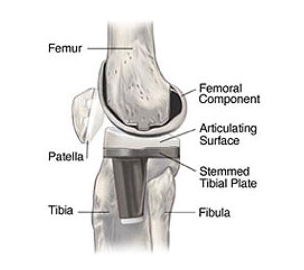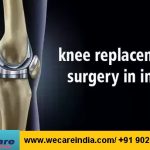High Flex Knee Replacement Surgery In India

The Flex Fixed Knee replacement is the first knee specifically designed to safely accommodate flexibility of up to 155 degrees. Many activities of daily living require good range of motion, such as climbing stairs (75-140 degrees) and sitting in a chair (90-130 degrees). Hobbies such as gardening and golfing or activities such as kneeling for prayer and sitting cross-legged can demand an even greater degree of bending. Generally, knee replacements have been designed to accommodate flexibility up to 125 degrees.
This information is part of a public awareness campaign, “Keeping pace with life,” designed to educate patients about the new Flex Fixed Knee as an option for total knee replacement. The campaign goal is to provide patients with information and insight into the leading edge treatment for joint replacements to help them make educated decisions about their course of treatment.
What Is The Benefit Of The Flex Fixed Knee?
The Flex Fixed Knee is specifically designed to safely accommodate up to 155 degrees of flexion in patients who had this ability before surgery. This means that with appropriate rehabilitation a patient can resume an active lifestyle after total knee replacement – deeply bending the knee for recreational, religious and other day-to-day activities. Patients today want to continue their previous lifestyles – even after total knee replacement. The Flex Fixed Knee may be an option for many patients to help them achieve this goal.
High Flex Knee Replacement – Surgical Procedure Surgery in india
The knee is the hinge joint consisting of three bones. The upper part of the hinge is at the end of the upper leg bone (femur), and the lower part of the hinge is at the top of the lower leg bone (tibia). When the knee is bent, the end of the femur rolls and slides on top of the tibia. A third bone, the kneecap (patella), glides over the front and end of the femur.
The damaged bone surfaces and cartilage are then removed by the surgeon. Precision instruments and guides are used to help make sure the cuts are made at the correct angles so the bones will align properly after the new surfaces (implants) are attached. Small amounts of the bone surface are removed from the front, end and back of the femur. This shapes the bone so the implants will fit properly. The amount of bone that is removed depends on the amount of bone that has been damaged by the osteoarthritis. A small portion of the top surface of the tibia is also removed, making the end of the bone flat. The back surface of the patella (kneecap) is also removed.
Special knee implants are now available in India. These allow the knee to function more naturally by providing more flexion or bending. This satisfies Indian, and South Asian requirements of kneeling for prayer, sitting cross legged on the ground for meals or social purposes. Muslims in particular need this to offer prayers. Japanese customs also require high knee flexion
Knee implants have been functioning very well for men and women, but we want to meet women’s unique needs by making knee replacements that feel, fit and function even better,” says Rosenberg. “The implant is the best of both worlds. It’s based on the current implant we use, a highly successful implant with great mechanics and 10 years of clinical success. Only the shape of this new implant is different, to make it feel more natural.














